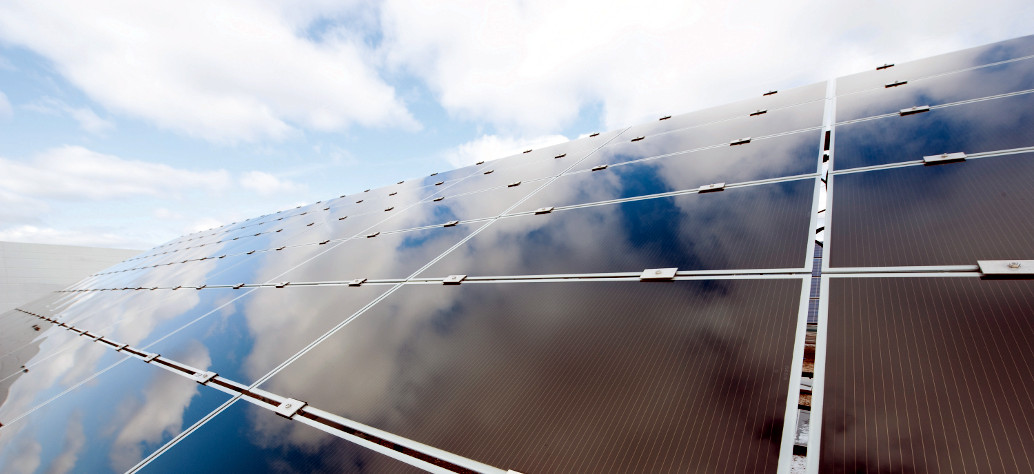First Solar had one Hell of a second quarter. The thin film solar maker began installing the first tools to make its large-format Series 6 in its Ohio factory, while also selling its Switch Station solar project to EDF. But what really changed First Solar’s current situation is the unexpected boon that the company has received from Suniva’s Section 201 trade filing, which has led to the hoarding of modules in anticipation of potential import tariffs and/or restrictions.
Since its last earnings call, First Solar reports 1.5 GW of module bookings, between third-party sales and new projects. This brings it to year-to-date bookings of 2.1 GW, which means that First Solar could be running low on modules to sell, as it shuts production lines down to prepare for the switch to Series 6.
“There is a tremendous amount of demand right now, across all segments of the market,” noted CEO Mark Widmar on the company’s results call.
When all the current bookings are measured against supply for 2017 and 2018, First Solar expects to only have 300 to 500 MW of Series 4 supply left over. The company has clearly seen that despite its desire to move quickly to Series 6, that Series 4 is still selling well.
But the truth is that First Solar doesn’t want to pass up either opportunity, and as a result it is increasing its investment. The company now plans to install Series 6 production equipment in its idled Vietnam factory, and is considering running Series 4 a little longer than previously planned in its enormous facility in Kulim, Malaysia.
And when the company spends the full billion dollars that it is planning for re-tooling, First Solar should have nearly 4 GW of annual capacity across its fleet by the end of 2019. This includes the 1 GW of Series 4 that the company has said it will retain, a number which it is considering increasing.
Prices and profit
Prices haven’t been bad either. While First Solar notes that solar module prices are still affected by a persistent global oversupply, CEO Widmar says that as a result of the hoarding in advance of a Section 201 decision “pricing has firmed up.” This is good news for First Solar, with no real downside, as its thin-film modules are exempt from any trade action that could result from the Section 201 case.
The result of both higher bookings and higher prices made for a good quarter for First Solar. The company’s sales were down 39% year-over-year due in part to shuttered lines and in part to fewer project sales, but despite $18 million in restructuring and asset impairment charges, First Solar still pulled off a positive operating margin and a net profit of $52 million.
This is not bad at all for a company in the middle of retooling. In addition to the benefit from third-party module sales, First Solar appears to be happy with the price it got for its Switch Station project, which it notes was higher than it would have recieved from yieldco 8point3 Energy Partners.
First Solar pulled back from 8point3 as it decided to chose to undergo the massive retooling to move to Series 6, and now the yieldco is undergoing a strategic review to decide what path to take forward. In the interim it isn’t picking up more projects, which is freeing up First Solar to sell its projects on the open market, which the company says if offering higher returns.
All of these factors combined have cause First Solar to up its guidance for the rest of the year, in terms of shipments, revenues, margins, profitability and cash balance. The most dramatic change is in operating income. Before First Solar was not sure if it would be in the red or the black in 2017, but now expects $115-$180 million in operating income, with $600 million more in net cash balance, in part due to reduced capital expenditures.
However, the company is clear that none of the many changes it is seeing are slowing down its timeline for moving to its large-format Series 6. “If there is any delay to S6, we don’t want to do that,” notes Widmar.
This content is protected by copyright and may not be reused. If you want to cooperate with us and would like to reuse some of our content, please contact: editors@pv-magazine.com.



1 comment
By submitting this form you agree to pv magazine using your data for the purposes of publishing your comment.
Your personal data will only be disclosed or otherwise transmitted to third parties for the purposes of spam filtering or if this is necessary for technical maintenance of the website. Any other transfer to third parties will not take place unless this is justified on the basis of applicable data protection regulations or if pv magazine is legally obliged to do so.
You may revoke this consent at any time with effect for the future, in which case your personal data will be deleted immediately. Otherwise, your data will be deleted if pv magazine has processed your request or the purpose of data storage is fulfilled.
Further information on data privacy can be found in our Data Protection Policy.